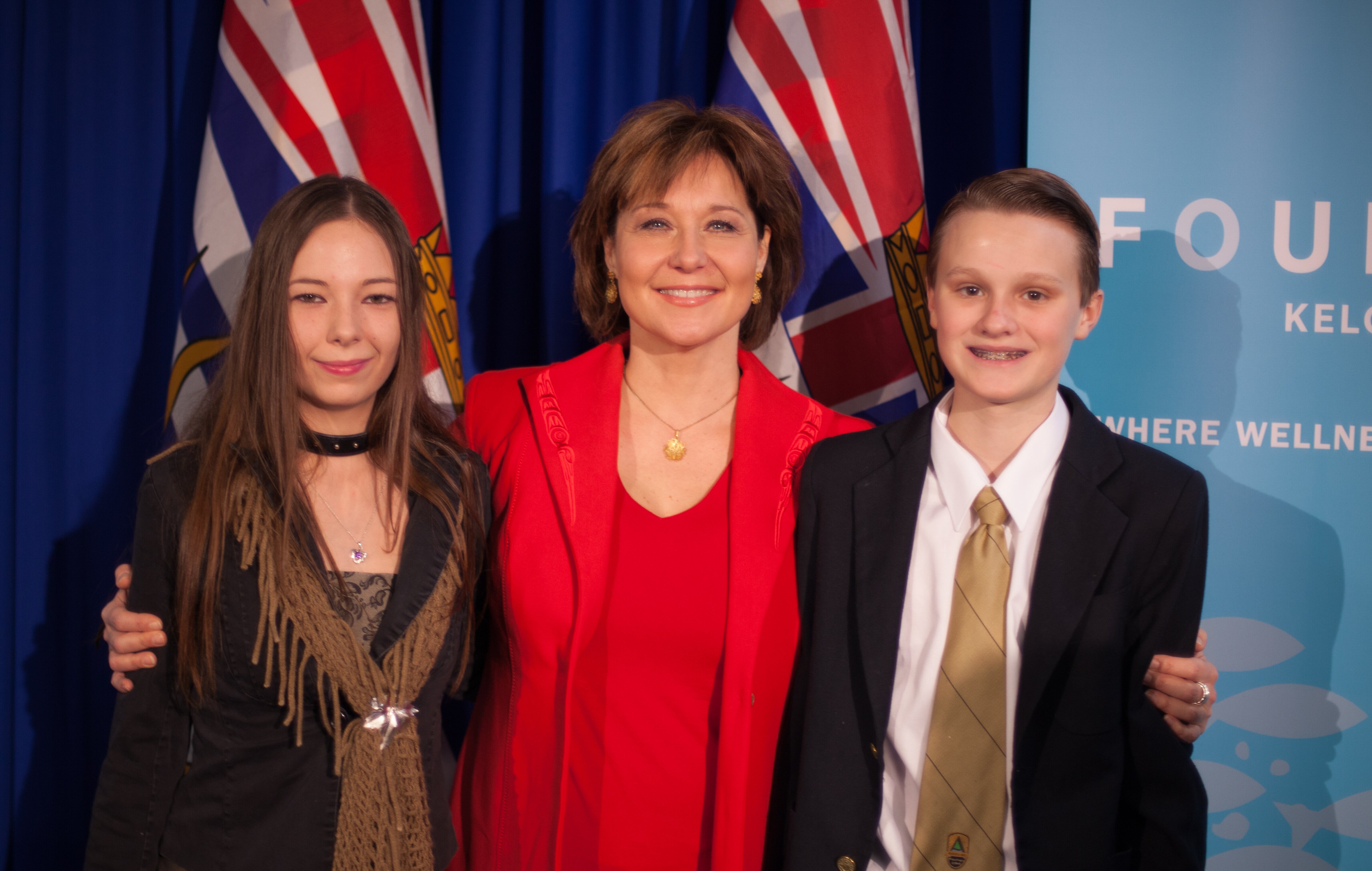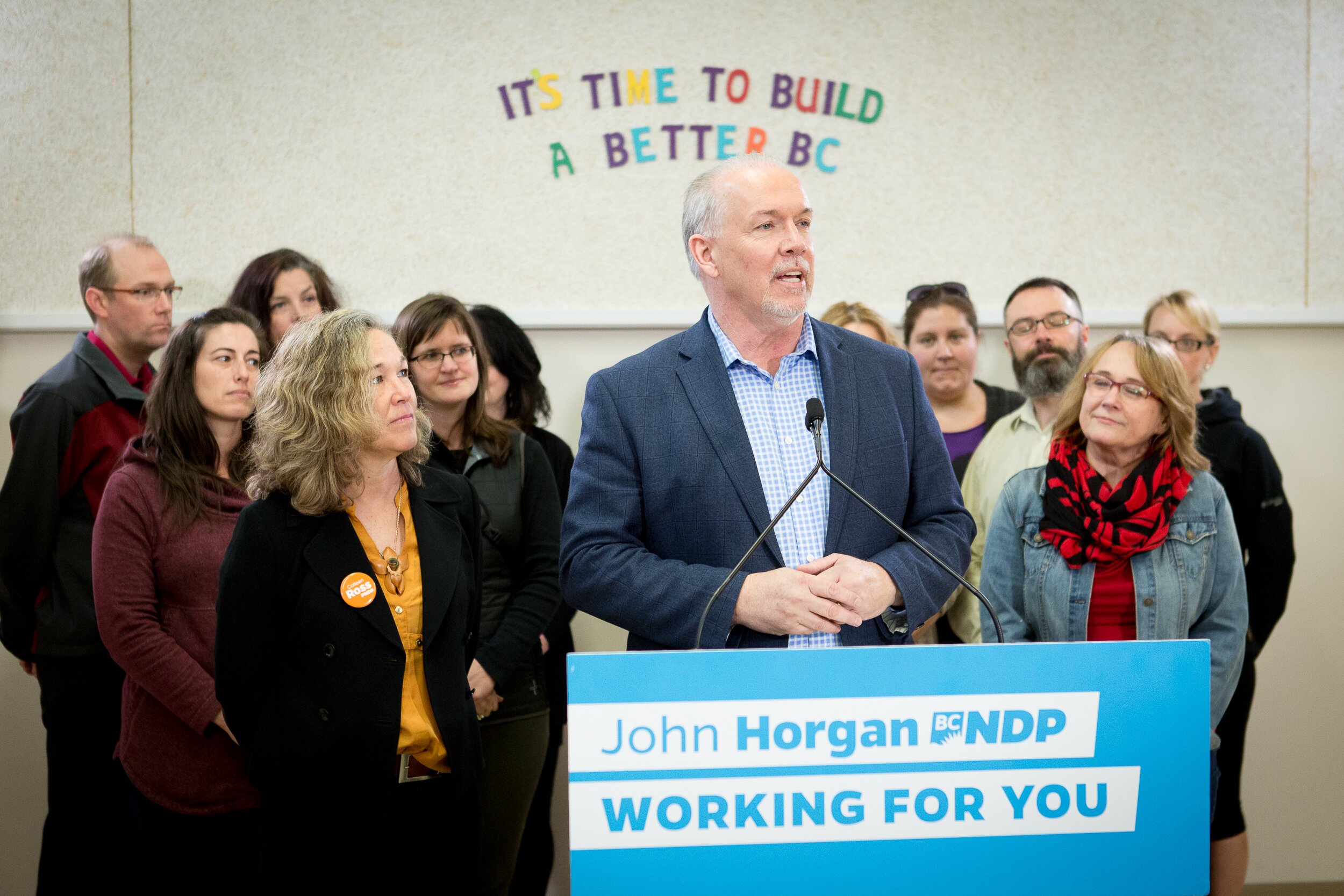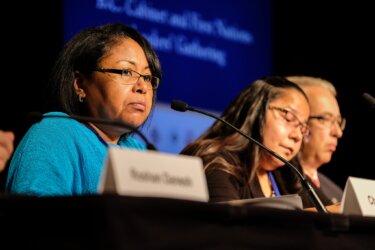How party promises on child welfare in B.C. stack up
Experts tells us that the province’s big three lack clear policies for dealing with problems facing kids in care.

When it comes to youth in B.C.’s child welfare system, Russell Pohl thinks we need to act now and we need to act preventatively.
“We definitely need to step up our services to families that are in crisis or potentially in crisis before their children come into our care,” says Pohl, the solutions facilitator and vice president of the BC Federation of Foster Parent Associations. “How do we help these families coming into crisis?”
In B.C., 18 per cent of kids receive government support from the Ministry of Children and Family Development (MCFD) in a given year — that’s 157,000, kids and their families.
We want to understand how political candidates running for B.C. leadership are thinking about child welfare, so we combed through Liberal, NDP and Green Party platforms — pulling out commitments to children in care, adoption and child welfare. We sorted them into four key issue areas: education, Indigenous children in care, youth “aging out” (or exiting the system) and adoption. And then we asked a few folks in the know to help us break these promises down.
We spoke with University of Victoria School of Social Work professor Dr. Susan Strega, First Nations Summit political executive Cheryl Casimer, Aboriginal Life In Vancouver Enhancement (ALIVE) Society executive director Scott Clark, and, of course, Russell Pohl.
On kids in care and education
BC LIBERALS
The BC Liberal Party has promised to:
- “Continue work with youth in care and those formerly in care to improve high school completion rates with a target of over 55 per cent by 2020.”
BC NDP
The BC NDP has promised to:
- “Ensure our K-12 system has the resources to help youth-in-care graduate with their peers.”
BC GREEN PARTY
The BC Green Party has promised to:
- “Take steps to promote healthy lives and support students to be mentally and physically prepared while acknowledging they may not be able to directly address the issues faced by those students who are traumatized by domestic violence, or troubled children in care, or those suffering from mental health issues.”
Social work professor Susan Strega wants to know why parties aren’t setting higher educational outcome goals for youth in care. As it stands, these kids are at a considerable disadvantage.
According to a 2016 report commissioned by Vancouver Foundation, “32 per cent of BC youth aging out of care had completed grade 12 with a Dogwood diploma at age 19 as compared to almost 84 per cent for the general population.”
Strega’s asking, “How can it be acceptable, when we’ve got a near 90 per cent completion rate for high school graduation amongst all other kids, that what [the Liberals] are looking at for kids in care is 55 per cent?”
She’d like to know how the Liberals plan to support these vulnerable youth through school while they’re being undermined by a lack of stability or permanency in their lives. “Can a kid concentrate in school when they’ve been through six or seven or eight or nine foster homes in one year?”

The NDP also lack a clear action plan, according to Strega. She’d like to know exactly what they’re promising for K-12 students in care and how these resources are going to be provided. On the flip side, she’s encouraged by the NDP’s promise to create a Ministry of Mental Health and Addictions.
Strega says the absence of specifics in the Green platform shows a lack of understanding about governing and the money required for funding education for children in care.
On Indigenous kids in care
BC LIBERALS
The BC Liberal Party has promised to:
-
Help youth in care by:
- “Investing $70.1 million to help keep First Nation families together and better support the children currently in care as recommended by Grand Chief Ed John.”
- “Continuing to work to reduce the number of children and youth in care, particularly the over representation of Aboriginal children by: Supporting families and communities to ensure that children and youth can safely remain at home and focus[ing] on finding forever homes.”
BC NDP
The BC NDP has promised to:
- “Implement the recommendations from Grand Chief Ed John’s report and provide better supports to keep Aboriginal children at home and out of care.”
- “When Aboriginal children do enter care, to ensure that basic care standards are met, that there is a plan for every child in care to connect them with their culture and communities, and that there is a plan for permanency.”
BC GREEN PARTY
The BC Green Party has promised to:
- “Work with stakeholders, including front line service delivery agencies, Indigenous people, local governments, educators, and community not-for-profit agencies to address recommendations made by the Representative for Children and Youth, and the Select Standing Committee on Children and Youth, including those regarding adoptions and foster care.”
- “Work collaboratively with First Nation communities to implement the recommendations from Grand Chief Ed John’s report, Indigenous Resilience, Connectedness and Reunification: From Root Causes to Root Solutions.”
While all parties have promised to implement the recommendations from Grand Chief Ed John’s report, even if they did, Scott Clark says that wouldn’t be enough.
“While [implementing the recommendations] may support the people on reserve, it does very little for the 80 per cent of Indigenous peoples living off the reservations,” says the Sc’ianew First Nations member and ALIVE Society executive director. “It sounds good, but what does it look like in practice? This is where the major political parties fail to actually meet the needs of our vulnerable children and families.”

Cheryl Casimer, political executive for the First Nations Summit Task Group, also feels party promises fall short when it comes to support for Indigenous communities.
“The MCFD [Ministry of Children and Family Development] has a sustainable budget, but a delegated agency has to work like a contractor and apply for funds — that’s no way to operate an agency that’s responsible for looking out for the wellbeing of children,” Casimer tells us. Her concerns mirror those laid out in the RCY’s latest report: Delegated Aboriginal Agencies: How resourcing affects service delivery.
“There needs to be investments made, working closely with the leadership and the communities of this province to start looking at jurisdiction models,” she says. “Once you’re able to look at the community or a nation assuming that level of authority, then you’ll start to see some significant changes around the number of children in care.”
On youth “aging out” of care
BC LIBERALS
The BC Liberal Party has promised to:
- “Work to improve the participation rate in the Agreement with Young Adult program and look at the expansion of supports for this cohort based on the advice of the Youth Advisory Council.”
- “Build on the success of diversion practices to support better outcomes for youth involved in the justice system.”
BC NDP
The BC NDP has promised to:
- “Increase funding for Agreements with Young Adults by an additional $10 million in order to offer supports to all youth aging out of care who need it, not just a few.”
- “Work with universities and colleges to expand the tuition fee waiver program and provide enhanced supports for former youth in care who pursue post-secondary education.”
BC GREEN PARTY
The BC Green Party platform has no specific promises regarding youth exiting care.
The Liberals and the NDP are promising to expand the Agreements with Young Adults (AYAs) program, which supports youth who are either aging out of foster care or transitioning from a Youth Agreement. This program — which has been criticized for its limitations — provides things like money for housing, child care, tuition and health care.
“[The] key difference between [Liberal] and NDP is that [Liberals] make a meaningless commitment to ‘look at the expansion of supports’ whereas the NDP demonstrate concrete commitment to resource this program,” says Strega, via email. For her it boils down to “the difference between committing $10 million and committing nothing.”
Under the Liberals, there have been changes to the AYAs program. In October 2016, they bumped the age of eligibility from 24 to 26 and expanded the number of years a young person can receive this support from two years to four. At the time, Minister of Children and Family Development Stephanie Cadieux said funding for the program will increase from $3.7 million to $5 million. She also said there were 500 youth in the program and on average they receive $1,000 per month.
These additional supports simply don’t cut it, argues Russell Pohl.
“These kids have already been failed on so many levels. We as a community need to step up and say, ‘We’re going to look after you until you’re 30, in the educational sense. We want to give you the best opportunity possible in becoming a member of the community,’” he says.
On adoption and youth safety
BC LIBERALS
The BC Liberal Party has promised to:
- Continue to find forever homes for at least 600 children and youth each year.
The BC NDP and BC Green Party platforms have no specific promises regarding adoption and youth safety.
In April 2016, our Liberal government announced, “A total of 644 young British Columbians, who were in government care, found the love and security of a forever home over the past two years, with 2015-16 marking the highest annual adoption count since the Adoptions Act came into effect in 1997.” The Ministry of Children and Family Development had exceeded its goal of realizing adoptions for 600 children in two years. And they set a new goal of realizing 600 more “forever homes” for kids in 2016-17.
"Sometimes it's just knowing that there's those people in your lives that are going to be there forever."
We asked Russell Pohl, whose non-profit provides services and information to foster parents and the MCFD, to explain what “forever homes” means. He told us that “forever homes” do not exclusively mean adoption, nor do they mean that children and youth won’t be changing homes. While the goal is for kids to stay in one place, Pohl says sometimes circumstances change and kids need to be moved.
“We talk more about permanency,” he tells us. “We used to talk about adoption ... that is not necessarily in the best interest of all children that are in care. Sometimes it’s just knowing that there’s those people in your lives that are going to be there forever.”
Another important thing to note about adoptions: While the Liberal government has set a new record, the playing field for Aboriginal and non-Aboriginal kids remains uneven. The MCFD’s March 2016 performance report tells us Aboriginal children “experience longer periods between being eligible for adoption and being placed in an adoption home” — which hurts their chances for adoption as “a child’s chances of finding an adoptive family are greater in the first two years in permanent care.” As it stands, “the adoption rate for Aboriginal children is just over half that for non-Aboriginal children.”
At the time of the goal-reaching announcement, then Representative for Children and Youth, Mary Ellen Turpel-Lafond said, “Moving forward, I hope to see the ministry embrace a greater understanding and respect for the cultural differences that inform the way Aboriginal children and families look at permanency and adoption practices.”
Who’s got your vote?
Which party’s platform will best serve vulnerable kids and families in B.C.? Tell us who has your vote and why. Join the conversation on our child welfare Facebook page. Or tag Brielle on Twitter, e.g.: “Hey @briellemimi, I’m voting for ________ in #bcelexn17 because…”
